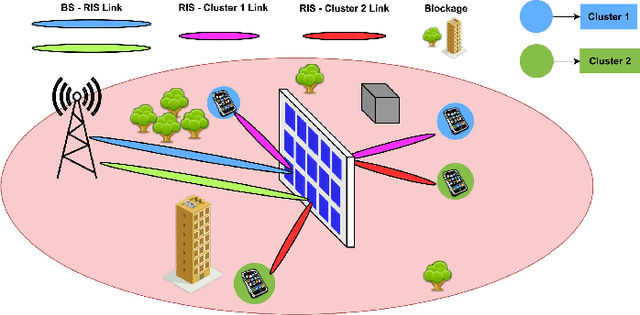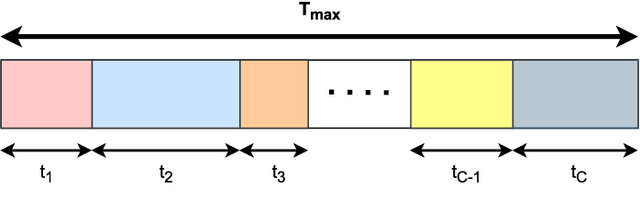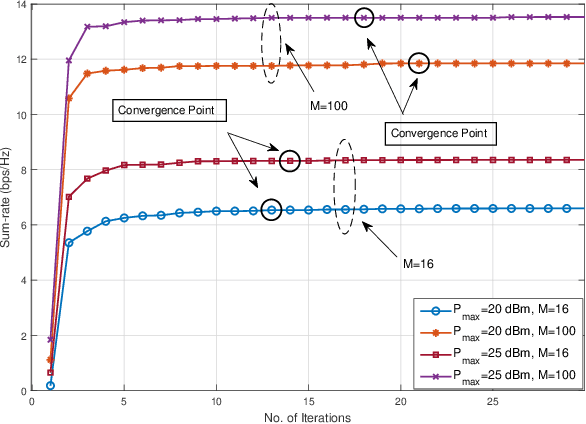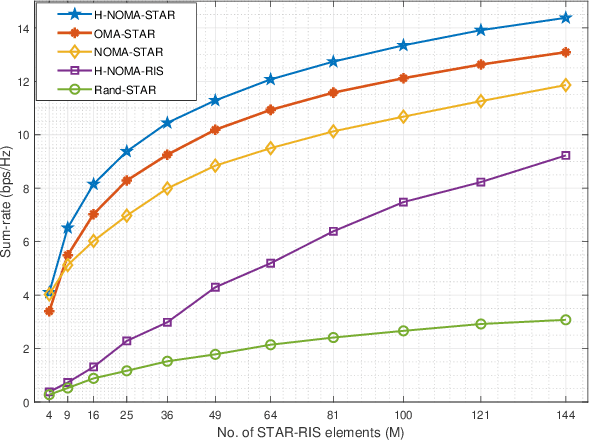Muhammad Talha
Enhanced Angle-Range Cluster Parameter Estimation in Full-Duplex ISAC Systems
Oct 14, 2025Abstract:This work studies an integrated sensing and communication (ISAC) framework for targets that are spread both in the angle and range domains. We model each target using a cluster of rays parameterized by a specific density function, and propose a truncated Multiple Signal Classification (MUSIC) spread (TMS) algorithm to accurately estimate the parameters of the density function. Unlike the conventional MUSIC spread (CMS), TMS restricts the signal subspace rank based on the eigen decomposition of the received-signal autocorrelation. We also propose a discrete Fourier transform (DFT) based algorithm for estimating the distance and range spread of each target. Leveraging these estimates, we then develop a dynamic transmit beamforming algorithm that successfully illuminates multiple targets while also serving multiple downlink (DL) users. Simulation results demonstrate the superiority of our proposed algorithms over baseline schemes in both low and high signal-to-noise ratio (SNR) regimes as well as under a wide angular spread regime.
Multi-Target Two-way Integrated Sensing and Communications with Full Duplex MIMO Radios
Dec 16, 2023



Abstract:In this paper, we propose a multiple input multiple output (MIMO) Full-Duplex Integrated Sensing and Communication System consisting of multiple targets, a single downlink, and a single uplink user. We employed signal-to-interference plus noise ratio (SINR) as the performance metric for radar, downlink, and uplink communication. We use a communication-centric approach in which communication waveform is used for both communication and sensing of the environment. We develop a sensing algorithm capable of estimating the direction of arrival (DoA), range, and velocity of each target. We also propose a joint optimization framework for designing A/D transmit and receive beamformers to improve radar, downlink, and uplink SINRs while minimizing self-interference (SI) leakage. We also propose a null space projection (NSP) based approach to improve the uplink rate. Our simulation results, considering orthogonal frequency division multiplexing (OFDM) waveform, show accurate radar parameter estimation with improved downlink and uplink rate.
STAR-RIS-Assisted Hybrid NOMA mmWave Communication: Optimization and Performance Analysis
May 13, 2022



Abstract:Simultaneously reflecting and transmitting reconfigurable intelligent surfaces (STAR-RIS) has recently emerged as prominent technology that exploits the transmissive property of RIS to mitigate the half-space coverage limitation of conventional RIS operating on millimeter-wave (mmWave). In this paper, we study a downlink STAR-RIS-based multi-user multiple-input single-output (MU-MISO) mmWave hybrid non-orthogonal multiple access (H-NOMA) wireless network, where a sum-rate maximization problem has been formulated. The design of active and passive beamforming vectors, time and power allocation for H-NOMA is a highly coupled non-convex problem. To handle the problem, we propose an optimization framework based on alternating optimization (AO) that iteratively solves active and passive beamforming sub-problems. Channel correlations and channel strength-based techniques have been proposed for a specific case of two-user optimal clustering and decoding order assignment, respectively, for which analytical solutions to joint power and time allocation for H-NOMA have also been derived. Simulation results show that: 1) the proposed framework leveraging H-NOMA outperforms conventional OMA and NOMA to maximize the achievable sum-rate; 2) using the proposed framework, the supported number of clusters for the given design constraints can be increased considerably; 3) through STAR-RIS, the number of elements can be significantly reduced as compared to conventional RIS to ensure a similar quality-of-service (QoS).
 Add to Chrome
Add to Chrome Add to Firefox
Add to Firefox Add to Edge
Add to Edge